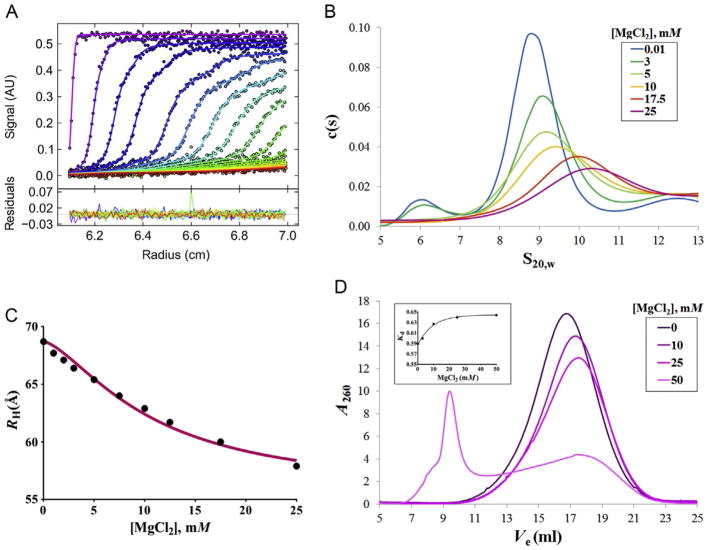Figure 2.
Study of the RNA tertiary folding by sedimentation velocity analytical ultracentrifugation (SV-AUC) and analytical size-exclusion chromatography (SEC). (A) Raw data from SV-AUC are analyzed using Sedfit program and the resulting fit is visualized using the GUSSI applet. (B) The sedimentation coefficient distribution is obtained for each magnesium titration point. The sedimentation coefficient of the main species increases as RNA is compacting in the presence of magnesium. The observed decrease in the absorbance at increasing magnesium concentrations is due to the hypochromicity effect, which occurs when RNA bases stack in the tertiary structure, thus diminishing its capacity to absorb ultraviolet light. (C) Stokes radii are calculated, represented as a function of magnesium concentration and fitted to the Hill equation. (D) Elution volumes in an analytical SEC experiment are plotted as a function of magnesium concentration. The hypochromicity effect is also observed as a decrease in the absorbance of the eluted RNA. At 50 mM magnesium chloride, the sample is mainly eluting in the void volume, which indicates that a nonspecific aggregation is occurring.

